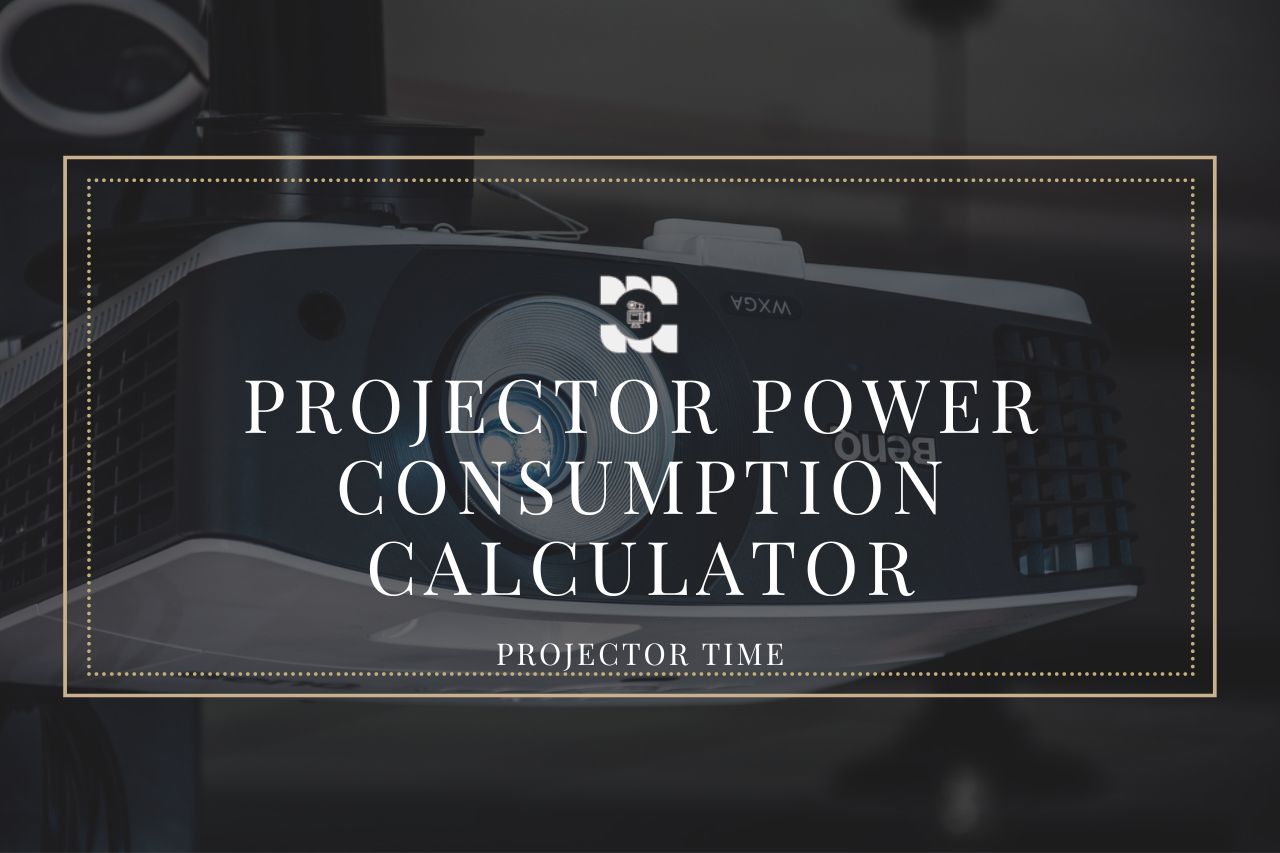Projector Power Consumption Calculator
Determine the power consumption, cost, and carbon footprint of your projector based on a set of assumptions.
Power Consumption:
Cost per Day:
Carbon Footprint:
In today's world, energy efficiency in electronic devices is more important than ever. Measuring and minimizing power consumption is crucial with the increasing use of gadgets and appliances. Our Projector Power Consumption Calculator helps you calculate the energy consumption of your projector, enabling you to optimize usage, reduce energy costs, and contribute to a greener environment.
How to Use the Projector Power Consumption Calculator
Using the Projector Power Consumption Calculator is simple. Just follow these steps:
Step-by-step guide
1. Input projector specifications:
- Brightness (in lumens)
- Resolution
- Projection Technology
- Lamp Color Temperature
- Projected Image Size (inches)
2. Input usage information:
- Distance to Screen (feet)
- Average Daily Usage (hours)
3. Calculate power consumption and cost:
- Overview of results: The calculator will display the estimated power consumption and cost based on your inputs.
- Carbon Footprint: The calculator will also display the carbon footprint of your projector usage.
Understanding Projector Power Consumption Factors
To make informed decisions and effectively use the calculator, it's essential to understand various factors affecting projector power consumption:
A. Projector types and their energy efficiency
- DLP projectors: These are known for their high contrast ratios but consume more power than LED projectors.
- LCD projectors: While offering better color accuracy, LCD projectors may consume slightly more energy than DLP projectors.
- LED projectors: LED technology lowers power consumption, making these projectors more energy-efficient.
- Laser projectors: These projectors boast exceptional image quality and are highly energy-efficient but come with a higher price tag.
B. Projector settings and features affecting power consumption
- Brightness levels: Higher brightness settings consume more power.
- Resolution: Higher-resolution projectors may require more power to display detailed images.
- Projection technology: Different projection technologies (DLP, LCD, LED, Laser) have varying energy consumption levels.
- Lamp color temperature: Higher color temperatures may consume more energy to produce brighter images.
C. Operational practices to reduce energy consumption
- Turning off when not in use: Powering down the projector when it's unnecessary conserves energy.
- Regular maintenance: Cleaning filters and maintaining the projector ensures optimal performance and energy efficiency.
- Room conditions and ambient light: Darker rooms require lower brightness levels, resulting in lower power consumption.
Tips for Choosing an Energy-efficient Projector
When selecting a new projector, consider these factors to ensure energy efficiency:
- Assessing power consumption specifications: Compare different models' wattage and power consumption ratings.
- Comparing projector models: Evaluate different types of projectors, such as DLP, LCD, LED, and laser, based on their energy efficiency.
- Considering additional energy-saving features: Look for projectors with eco mode, standby mode, and other energy-saving options.
Conclusion
The Projector Power Consumption Calculator is an invaluable tool for optimizing energy usage, reducing costs, and contributing to a greener environment. By understanding the factors affecting projector power consumption and adopting energy-efficient habits, you can positively impact your wallet and the planet. If you liked this tool, please share.
Frequently Asked Questions (FAQ)
Q: How much does a projector cost to run?
A: The cost depends on the projector's wattage, usage, and local electricity rates. For example, with a 336-watt projector used for an average daily usage of 4 hours and an electricity rate of $0.10 per kWh, the cost per day would be $0.32, and the annual cost would be $117.73.
Q: Are projectors energy-efficient compared to TVs?
A: The energy efficiency of a projector depends on its type, settings, and usage patterns. Generally, projectors can be more energy-efficient than TVs, especially LED and laser projectors. However, comparing specific models and considering your usage habits is essential to determine which option is more energy-efficient.
Q: What is the average lifespan of a projector?
A: The lifespan of a projector depends on the type, usage, and maintenance. Lamp-based projectors (DLP and LCD) usually have a lamp life of 2,000 to 6,000 hours, while LED and laser projectors can last up to 20,000 hours or more. Regular maintenance and proper usage can extend the life of your projector.
Q: How can I extend the life of my projector and save energy?
A: To extend your projector's life and conserve energy, follow these tips: 1. Use eco mode to reduce power consumption and extend lamp life. 2. Turn off the projector when not used. 3. Keep the projector clean, and replace filters as needed. 4. Use the projector in a well-ventilated area to prevent overheating. 5. Adjust brightness settings according to room conditions.

